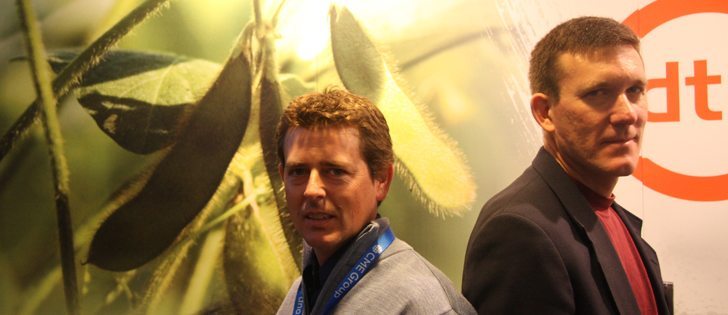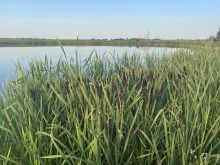Difficult to do business | High government taxes and a lack of safety nets keep Trimmer brothers renting rather than buying
CHICAGO, Il — One of Lee Trimmer’s first trips to Argentina was a memorable five-day odyssey comprising six flights, plenty of lengthy layovers and two bus rides.
It was inconvenient, but it was $350 cheaper than a direct flight.
That’s the kind of budget Trimmer was working with when he set out to diversify his family’s Missouri farm by starting an operation on a different continent.
The first thing he bought was a bicycle for commuting from his base in General Villegas, a town in the Buenos Aires Province of Argentina.
Read Also

Europe holds promise for Canadian lentils
Pulse Canada is trying to help boost lentil consumption in Europe, which is already the fourth largest market.
The farm was close to town but he still logged 8,000 kilometres that year on his bike, which he named Buster.
“I call him Buster because he busted certain parts of my anatomy,” said Lee.
Lee’s brother, J.W., stayed at home to oversee the family’s 1,000 acre farm near Maitland, Mo. It was a small operation that couldn’t support the two brothers and their parents. The margins in row crop farming were about $50 an acre at that time.
“We didn’t have a lot of capital. What we did have was a lot of need,” J.W. told delegates attending the DTN/Progressive Farmer Ag Summit 2012.
So 13 years ago, the brothers decided to diversify the operation, considering Brazil and Argentina.
“Once we got to looking at it, the things we liked about Argentina was it’s a great place for crop production,” he said. “There is no question that Argentina has a great climate and very fertile land, some of the best in the world.”
They liked that the primary crop production regions were close to the ports, which meant infrastructure wasn’t going to be an issue. And they saw an opportunity to get in on the early stages of a land conversion from pastures to grain farming.
The original plan was to use the same owner-operator model they were using in Missouri. However, they soon recognized that farming in Argentina was a high-risk environment, largely because of an interventionist government, so they adopted what they called the “suitcase plan.”
“The plan was simply to provide two inputs: management and capital,” J.W. said. “We would rent the land and we would hire the contractors to do the work.
“At the end of every season, everything was liquid and if it wasn’t working, we could pack the suitcase and head back home.”
Plenty of land is available in Argentina. J.W. estimated that 60 to 70 percent of the country’s farmland is for rent. Rents are based on the value of a bushel of soybeans and go up and down with commodity prices.
The diversification strategy paid off handsomely in the early years, delivering a 50 percent return on investment. However, the returns shrunk in later years.
“It’s a great place to grow crops. It’s a really difficult place to do business,” he said.
The main drawback is a gross sales tax amounting to 35 percent of the value of soybean crops and 20 percent of corn crops. The taxes have prompted strikes at the ports and widespread farmer protests.
“Despite the fact that row crops, and soybeans in particular, provide a very large percentage of their hard currency and really is an underlying pillar of the economy, they choke that golden goose just as hard as they can to get just as much tax out of it as possible,” said J.W.
There are no safety nets. If farmers have a tough year, they either downsize or disappear. That is one of the reasons why the Trimmers haven’t strayed from their suitcase model.
“We’ve never felt comfortable with long-term investments there,” said J.W.
It has been a profitable venture that in most years provides the dual-continent farm with insurance against weather disaster, although in 2012 they experienced droughts in both countries.
Profits from the Argentina operation helped pay for expansion of the U.S. operation. The Trimmers are now farming 3,200 acres in Missouri and own land in Mississippi that they rent out.
The farm in Argentina ranges from 3,000 to 10,000 acres, largely depending on the strength of the rental market. Moving to Argentina was a steep learning curve for the Trimmers, who didn’t know the language or how the business environment worked.
However, Lee said he relishes the chance to work with the latest in farm equipment, such as a sprayer with carbon fibre booms that is expected to increase spraying efficiency by 20 percent. He also likes farming in a climate with a longer growing window where he can do things such as experimenting with seeding dates.
And now he’s able to afford a more direct flight when he returns home for a visit or to speak at a conference. His latest flight cost him $1,800.
“It was still the economy class; just a lot less layovers,” he said.
















